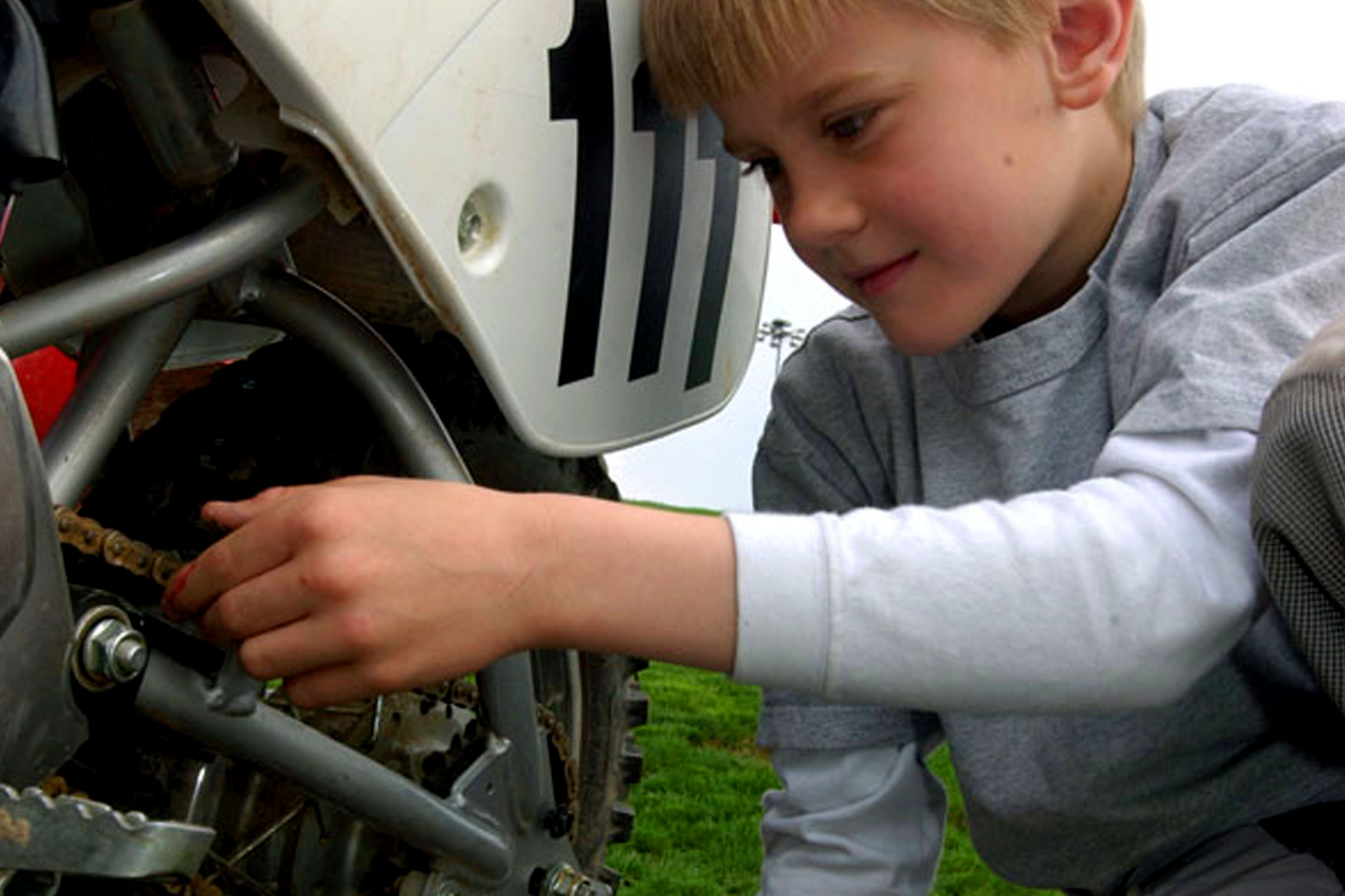Maintain a vehicle
Practice basic vehicle maintenance by checking tire pressure, fluids, lights, and cleaning filters with adult supervision to keep a car safe.



Step-by-step guide to maintain a vehicle
7 Easy Steps for Basic Car Maintenance! : Step-by-Step Guide 🚗🔧
Step 1
Ask an adult to supervise you during this vehicle check.
Step 2
Put on your safety gloves.
Step 3
Walk all the way around the car and look for flat tires dents cracks or puddles under the car.
Step 4
Ask the adult to switch on the headlights brake lights and turn signals so you can check each light works.
Step 5
Shine the flashlight under the car and into the wheel wells to look for drips loose parts or damage.
Step 6
Use the tire pressure gauge to measure the pressure of each tire.
Step 7
Ask the adult to help you inflate any tire that is below the recommended pressure using the air pump.
Step 8
Ask the adult to open the hood and wait until the engine is cool before you touch anything under it.
Step 9
Ask the adult to help you remove the oil dipstick.
Step 10
Wipe the dipstick with a clean rag.
Step 11
Reinsert the dipstick and pull it out again to check the oil level against the marked range.
Step 12
With the adult's help check the coolant brake fluid and windshield washer fluid reservoirs and top them up only if the adult says it is safe.
Step 13
Remove the cabin air filter cover with the adult's help and shake or vacuum the filter if it looks dusty.
Step 14
Share a photo and a short note about your vehicle check on DIY.org.
Final steps
You're almost there! Complete all the steps, bring your creation to life, post it, and conquer the challenge!


Help!?
What can I use if I don’t have safety gloves, a flashlight, a tire pressure gauge, or an air pump?
If you don’t have safety gloves use rubber dish gloves, use your phone’s flashlight to shine under the car and into wheel wells, use the gas station’s pressure gauge or ask the supervising adult to borrow a tire pressure gauge, and use a manual foot pump or the service station air pump to inflate any low tire.
My tire pressure readings seem inconsistent and the dipstick looks greasy—what might be wrong and how do I fix it?
Park the car on level ground with cold tires and check valve caps if the tire pressure gauge gives varying readings, and always wait until the engine is cool and wipe the dipstick with a clean rag, reinsert it, then pull it out again to read the correct oil level.
How can I adapt this vehicle check for younger kids, older kids, and teens?
Have younger kids (4–7) do the walk-around to point out flat tires, dents, or puddles and take the photo and short note, 8–12-year-olds can use the flashlight to inspect wheel wells and help shake or vacuum the cabin air filter with adult help, and teens can measure tire pressure with the tire pressure gauge, assist inflating tires with the air pump, and check fluid reservoirs under adult supervision.
How can we extend or personalize the activity after completing the basic vehicle check?
Make a checklist and maintenance log to record tire pressure numbers, oil dipstick level readings, dates you topped up coolant or washer fluid, and post the photo and short note to DIY.org as a progress entry or add stickers to a 'car health' chart for milestones.
Watch videos on how to maintain a vehicle
How To Maintain Your Car For Beginners | The Ultimate Guide to Making Your Car Last Longer
Facts about vehicle maintenance for kids
💡 A burned-out headlight or taillight is one of the most common reasons drivers get stopped—quick light checks prevent surprises.
🧼 A dirty engine air filter makes the car work harder; swapping a clogged filter can improve how a car accelerates and breathe.
🧪 Cars rely on several fluids (coolant, brake fluid, transmission, power steering); low or dirty fluids can cause overheating, brake issues, or slipping gears.
🛢️ Motor oil not only lubricates moving parts but also helps cool and clean the engine, so fresh oil keeps engines happier.
🚗 Tire pressure can drop about 1–3 psi per month and falls faster in cold weather—check tires monthly when they're cold.
How do we practice basic vehicle maintenance with a child?
What materials do I need to practice basic vehicle maintenance with my child?
What ages is practicing vehicle maintenance suitable for?
What are the benefits and safety tips for teaching kids vehicle maintenance?


One subscription, many ways to play and learn.
Only $6.99 after trial. No credit card required



